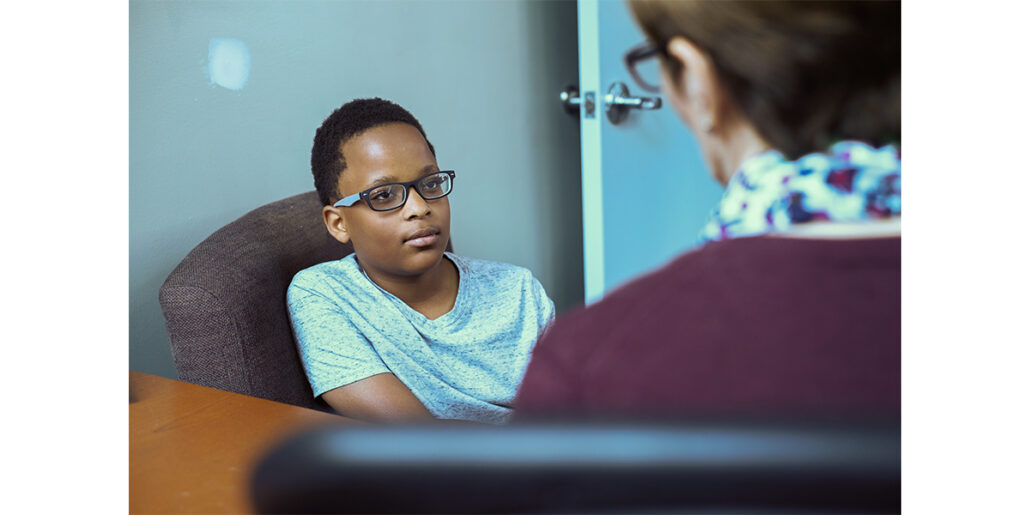A Light in the Darkness: Celebrating Christmas at Mercy Home
Holiday cheer was in the air at Mercy Home as our young people and coworkers celebrated Christmas. The beloved annual...
December 23, 2025
March 26, 2022
For many of us, that confusion doesn’t have any effect on our day-to-day life. But what if you were an adolescent who were in a crisis situation and had nowhere to turn other than a residential treatment home like Mercy Home? What would you wonder about what it was like? What immediately comes to mind when you hear the words residential treatment?
We are often asked if Mercy Home is an orphanage, because that’s really the only context many of us have when thinking about residential treatment facilities. It’s tempting to picture an Oliver Twist scenario, with large rooms crammed with beds wall-to-wall and lines for porridge at dinner time.

This is actually a very outdated view of how orphans, and other children from difficult home situations, are treated. In fact, orphanages do not exist in the United States anymore, particularly in the traditional way many of us think. In their place are boarding schools, residential treatment centers, group homes, and foster care.
Mercy Home specifically is a privately funded Catholic organization that provides a safe, nurturing residential treatment home for at-risk children living in the Chicago area. It isn’t just a place for children who don’t have parents. We offer a safe living environment that provides for our kids’ educational, emotional, and spiritual needs, as well as opportunities for growth. And our program is voluntary—our kids are here because they want to build brighter futures for themselves. They are not kept at Mercy Home until they are adults or adopted. If possible, we hope to heal familial relationships and ultimately return our children to their homes in the community.
When children and families contact Mercy Home for help, it is often because they are in a crisis situation.
“Families are coming to us at the most conflictual high crises situations,” Kari Sikich, the Director of Admissions and Clinical Development, said. “They’re not contacting us when things are going well. Our initial contacts with them are often ones of desperation.”
The specific circumstances that lead families to turn to Mercy Home can differ, but they often don’t seek out residential treatment for their child until less intensive solutions have been explored, such as outpatient therapy, school counseling, hospitalization, or other interventions.

Alban Fisher, the Vice President of Residential Programs, explained that there are usually several different pathways that lead a child to Mercy Home.
One is that the child’s family is experiencing some kind of stressor, whether it be financial or something different, and are in need of services that they can’t find in their community. These kids might be struggling in school, and the school is unable to help.
Another pathway is a child who has specific needs that are beyond what their family is able to provide for. Often, others’ way of dealing with these needs have not worked.
“They’ve tried outpatient [treatment], they’ve tried mentors, they’ve tried sports teams, they’ve tried tutoring, they’ve gone up to the school, gotten an IEP, they tried medication, they tried punishment … and their child still needs something more,” Fisher explained.
Another more difficult circumstance that brings many children to our Home is when a parent or guardian is struggling with a problem that interferes with their ability to care for their child. Often this is a struggle with mental health or an alcohol or substance abuse issue.

Though these are serious issues that require help, the decision to come to a residential treatment home is also one that we encourage our children and families to not take lightly.
“We [talk] to them about how big a decision it is to come here, how big of an intervention [it is],” Sikich said.
People also often believe that the family is totally out of the picture by the time a child arrives at a residential treatment facility. While this may be true at some places, that is not the way Mercy Home operates.
“I understand where the misconception comes from because most residential facilities work with kids who are youth in care, formerly known as wards of the state, who have been removed from their family of origin and don’t necessarily have really strong family ties,” Emily Neal, the vice president of organizational development, said. “But Mercy Home is very different because they have to have a parent or guardian involved.”
In fact, parents or guardians play an important role in their child’s treatment. They are contacted at least weekly and are asked to attend family therapy and other program events (when it is safe to do so).
In simpler terms, parents do not drop off their children to be “fixed” and returned home. Everyone has to play a part in the child’s treatment and strengthening the familial bond.
Fisher noted another difference between other residential facilities and Mercy Home is that, in addition to keeping our kids connected to their own families, we also provide them a family-like living environment.

Because there are so many misconceptions about what residential treatment is, it’s not surprising that many of our young people also come in not knowing what to expect. Fisher explained that many of our kids come in feeling cautious about everything, including the people working in their program.
“They’re not used to people being nice to them, or even being firm with them,” Fisher said. “I think they’re used to people leaving them alone a lot [which makes] that connection difficult for a lot of kids.”
Another important thing to note is that, for the kids who come to Mercy Home, it’s not a one-size-fits-all treatment. That’s another old-fashioned notion, that one strategy will work for every child. Instead, our team of coworkers work with each other, the child, and the child’s family and teachers to create a plan that will work for best based on individual needs.

Treatment plans also change over time. What a young person needs when they initially move into Mercy Home may not be what they need after several months staying with us. Initially, our children’s focus is just on having their basic needs met before they can accept help from other resources.
“[It’s important to remember] that someone who’s pushing [resources] away is ultimately refusing those resources,” Sikich said. “Their focus and their needs are somewhere else at that time. … [We can build] upon it as they’re able to regulate themselves, feel safe in an environment, and then we can put in more resources.”
Perhaps most important is that, at Mercy Home, we are blessed to be able to offer the many resources and individualized treatment that have helped countless children find hope and healing over the years. Thank you for supporting all that we do!
Holiday cheer was in the air at Mercy Home as our young people and coworkers celebrated Christmas. The beloved annual...
December 23, 2025
One of Mercy Home’s most meaningful traditions is the Book of Service, an annual volume that summarizes the many ways...
December 23, 2025
When Zeni, a former Mercy Homer resident, found out that her five-year-old nephew’s school was having cookies with Santa Claus,...
December 22, 2025
Comments